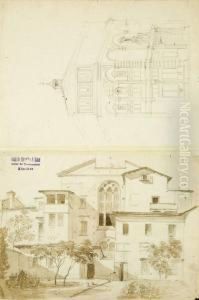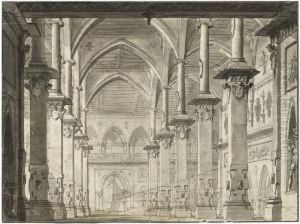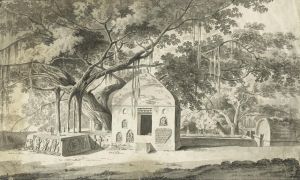Angelo Ii Quaglio Paintings
Angelo II Quaglio was a 19th-century painter, part of the extensive Quaglio family of Italian artists known for their scenic artistry and contributions to stage design and architecture. Born on April 13, 1829, in Munich, Angelo belonged to the Lombard branch of the family, which had settled in Germany. The Quaglio family had a significant impact on German art, particularly in the areas of scene painting and architecture for several generations, beginning with Giulio Quaglio the Elder in the 17th century.
Angelo II was the son of Simon Quaglio, also a painter, and received his artistic training within his family, which was customary for the time. His uncle, Angelo I Quaglio, was a prominent stage designer and painter, and it's from him that Angelo II took his name. Quaglio's works were primarily influenced by the Romantic movement, which was prevalent during his lifetime. He is known for his detailed and atmospheric landscape paintings, which often included architectural elements reflecting his background in stage design and scenography.
Throughout his career, Angelo II Quaglio worked on both theatrical productions and his canvases. His paintings typically depicted romantic landscapes and ruins that captured the historical and emotional resonance of the place, often evoking a sense of nostalgia. Quaglio's work was appreciated for its attention to detail, use of light, and the ability to convey mood.
Angelo II Quaglio's paintings were exhibited in various German cities, and he gained a reputation as a skilled landscape artist. Unfortunately, detailed records of his exhibitions and specific works are not as well documented as those of some of his contemporaries. Angelo II Quaglio continued the artistic legacy of his family until his death on January 15, 1890, in Munich. His works are part of various collections and continue to be studied by those interested in the Romantic period and the history of scenic design.


